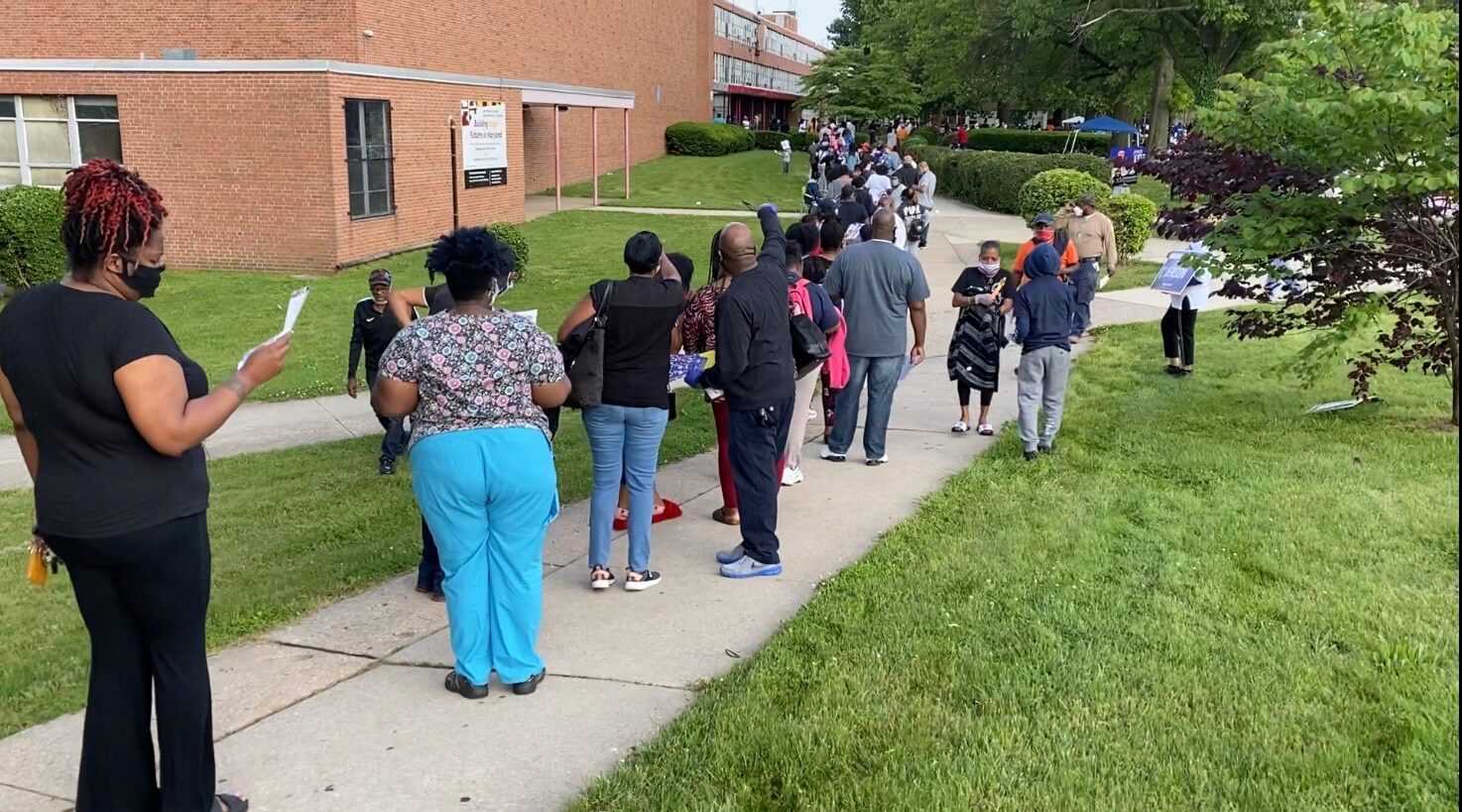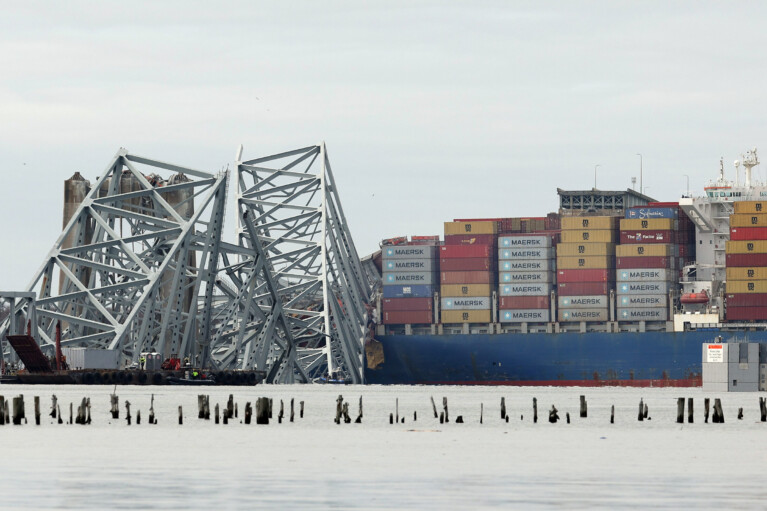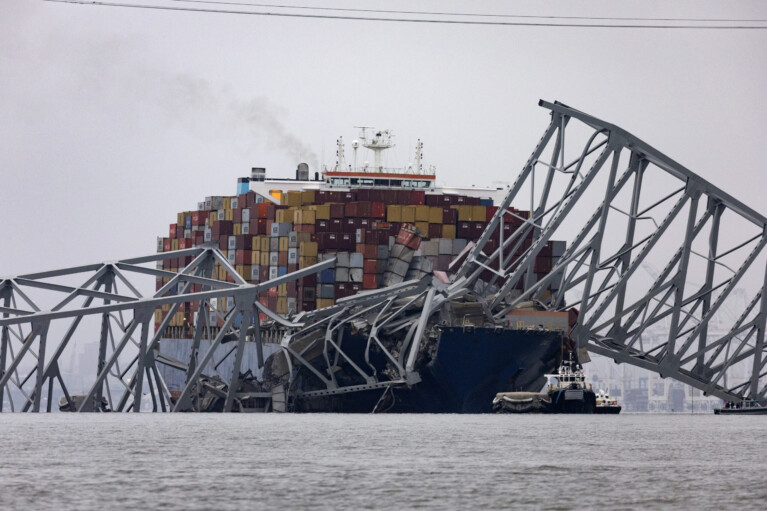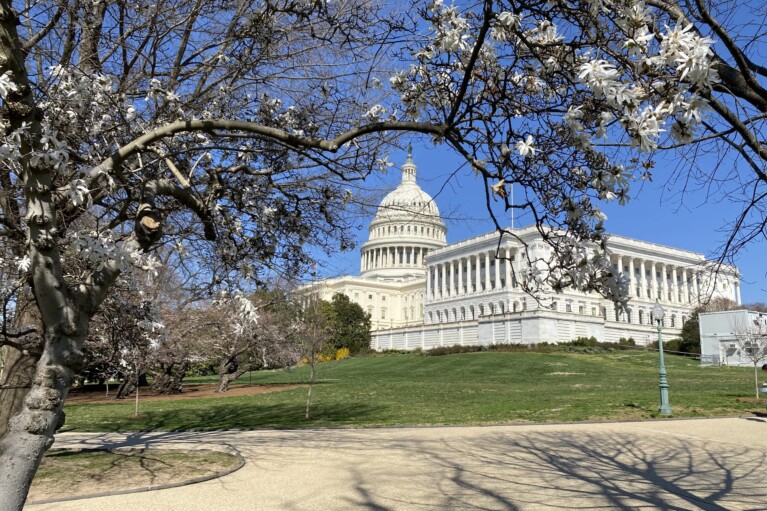Long Lines at Limited Polling Places Plus Mail-in Ballots Lead to Delays in Results

More than 41,000 Marylanders voted in-person during Tuesday’s primary, officials said, capping off an unusual and unprecedented election that was mostly conducted by mail.
Some voters who arrived at polling locations before the planned 8 p.m. closure were still in line hours later, Maryland State Board of Elections Deputy Administrator Nikki Charlson said.
Because jurisdictions throughout the state had far fewer polling places than they would during a normal primary, the few open polling stations attracted big crowds — especially in Baltimore City, where primaries were being held for mayor and other city offices.
Even after the last voters finally cast their ballots on Tuesday evening and results are posted, mail-in ballots will continue to trickle in, and it could be several days before certain elections are called. Officials previously said precinct-level results won’t be available, given the nature of the elections.
Results on the State Board of Elections website remained thin as of 11 p.m. on Tuesday, with many counties either not reporting or showing only local elections and mail-in ballots.
Marylanders were voting in presidential and congressional primaries, and in local races.
While not officially called, one election seems close to being over: Based mostly on mailed-in ballots, Cecil County Executive Alan McCarthy (R) was poised to lose his bid for a second term. In the GOP primary, Danielle Hornberger, an aide to U.S. Rep. Andrew P. Harris (R-Md.), had 60.5% of the vote, while McCarthy had 24%.
Joanne Antoine, the executive director of the government watchdog group Common Cause Maryland, said her organization had heard about some voters experiencing long waits in lines. She said delayed ballot deliveries, coupled with undeliverable ballots, also led to voter confusion.
“A lot of these voters probably didn’t even know, you know, that their information was outdated and that they needed to change it,” she said, referencing the thousands of undeliverable ballots from an earlier special election. “So we’re hearing from voters who are saying that they never received a ballot, or that it came and they just didn’t know.”
The shift to mail-in ballots was a change for most Marylanders: Absentee ballots in the state usually account for between 6% to 8% of the total vote, Charlson said.
Charlson said she and other election officials will huddle in the coming weeks to hash out a plan for November. Whether the general election will be in-person or conducted via mail hasn’t been decided – but Charlson hopes a decision will be made by the end of June.
The lessons learned from this mostly mail-in primary will inform how Maryland’s general election looks, Charlson said.
“This is our first vote-by-mail election with in-person voting, so we don’t have anything to compare it to,” Charlson said.




 Creative Commons Attribution
Creative Commons Attribution